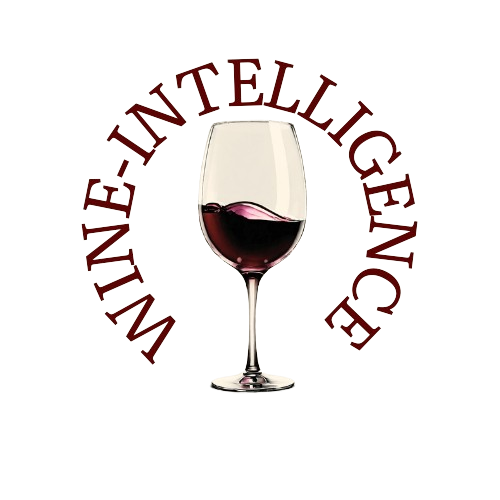The Champagne industry is facing a structural crisis in 2024, as global exports fell by 9.2%, totaling 271.4 million bottles.
The decline reflects ongoing economic and geopolitical pressures that have dampened demand across international markets. According to the Union des Maisons de Champagne, citing the CIVC (Comité Interprofessionnel du Vin de Champagne), Champagne exports generated 3.75 billion euros (excluding VAT) in revenue this year, a significant drop from 2023.
Notably, shipments outside France totaled 153.41 million bottles, down from 171.71 million in 2023, meaning 18 million fewer bottles were exported. This decline has contributed to an overall market contraction, with total turnover now below 6 billion euros.
A Look at Key Export Markets in 2024
Despite the downturn, Champagne remains a highly valued product worldwide, with certain markets maintaining their positions as crucial importers:
- United States: 27.41 million bottles shipped, reaffirming its status as the world’s largest Champagne market. However, economic uncertainties and shifting consumer behavior have affected premium purchases.
- United Kingdom: 22.31 million bottles, securing second place despite ongoing challenges such as inflation and changes in import duties post-Brexit.
- Japan: 12.45 million bottles, demonstrating resilience and continued appreciation for Champagne within the luxury and fine dining sectors.
- Germany: 9.51 million bottles, slightly down but still representing a steady European market.
- Italy: 8.37 million bottles, with demand holding stable despite economic fluctuations.
- Belgium: 7.62 million bottles, maintaining its role as a key re-export hub in Europe.
- Australia: 7.30 million bottles, showing a decline in demand as cost-of-living pressures impact consumer spending.
- Switzerland: 4.82 million bottles, continuing a downward trend.
- Spain: 3.73 million bottles, affected by local economic conditions and competition from domestic sparkling wines like Cava.
- Netherlands: 3.10 million bottles, remaining a steady but relatively small market.
Why Are Champagne Exports Declining?
Several factors have contributed to the current downturn:
- Inflation and Economic Uncertainty: Rising costs of goods and services worldwide have led consumers to reassess discretionary spending, impacting luxury goods such as Champagne. In key markets like France, the U.S., and the U.K., consumers have become more price-sensitive, leading to a drop in demand.
- Global Geopolitical Tensions: Conflicts and trade disruptions have added volatility to the global economy. This instability has impacted purchasing power and consumer confidence, particularly in markets that previously saw strong growth.
- Market Saturation and Changing Preferences: While Champagne remains a symbol of celebration, younger consumers are increasingly exploring alternatives such as natural wines, premium Prosecco, and local sparkling wines. This shift is particularly evident in countries like the U.S. and the U.K., where emerging brands and sustainable winemaking trends are influencing purchasing choices.
- Currency Fluctuations: A strong euro against weaker currencies in export markets has made Champagne more expensive abroad, limiting accessibility in price-sensitive regions.
- Stock Adjustments by Distributors: Many Champagne houses and distributors built up inventories during previous years of high demand, particularly in 2021 and 2022. With economic slowdowns, distributors are now reducing stock levels before placing new orders, leading to a temporary dip in shipments.
How Is the Industry Responding?
Despite these challenges, Champagne houses and producers are adapting their strategies to stabilize the market and prepare for future growth.
🔹 Emphasizing Sustainable Production: Many Champagne producers are increasing their focus on organic and biodynamic winemaking, aligning with consumer preferences for sustainable products.
🔹 Exploring New Markets: While traditional markets like the U.S. and U.K. are experiencing a slowdown, Champagne houses are looking to expand exports to regions like China, South Korea, and the Middle East, where luxury consumption remains robust.
🔹 Strengthening Premium and Prestige Cuvées: While total volume is declining, the market for ultra-premium Champagne is proving more resilient. Major houses are pushing limited editions and vintage releases to maintain profitability.
🔹 Direct-to-Consumer Sales and Digital Marketing: With the rise of e-commerce and digital engagement, Champagne brands are focusing more on online sales, virtual tastings, and influencer-driven marketing to reach younger audiences.
Industry Outlook: Cautious Optimism for 2025
David Chatillon, President of the Union des Maisons de Champagne, has emphasized that while 2024 has been challenging, the sector remains strong thanks to its heritage, adaptability, and long-term vision.
"The Champagne industry has faced challenges before, and it has always emerged stronger. Our priority now is to navigate these economic headwinds while continuing to invest in sustainability and premiumization," he stated.
Despite short-term setbacks, the Champagne industry is positioned for recovery in the coming years, provided that economic conditions stabilize and consumer confidence returns. The sector’s commitment to quality, tradition, and innovation remains its greatest asset in weathering these fluctuations.
Source: CIVC

